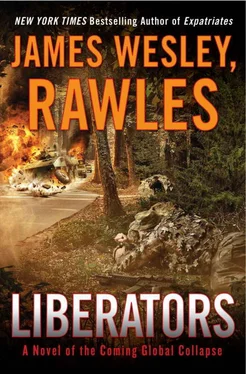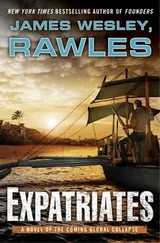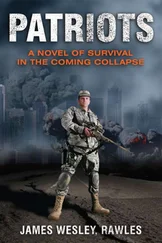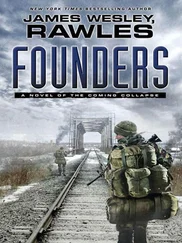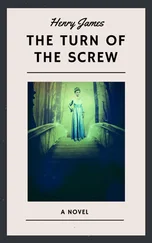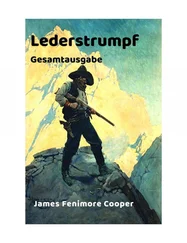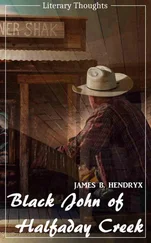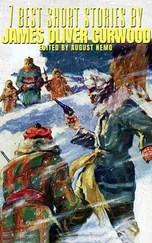Megan and Malorie both became good friends of Sheila, in part because they all spoke French. They spent many hours chatting in French and relished comparing the peculiar differences between Canadian French and Louisiana Creole French.
• • •
It wasn’t long before Dustin was reassigned as a homicide and missing persons investigator. This proved to be a frustrating and largely fruitless job. With the power grid and Internet down, he had no access to databases such as NCIC, driver’s licenses, and motor vehicle registration. Being thrown back to nineteenth-century technology made it very difficult for Dustin to make headway, and he had a mountain of open case files.
27
LA MAIN DE FER DANS UN GANT DE VELOURS
Part of your diversification strategy should be to have a farm or ranch somewhere far off the beaten track but which you can get to reasonably quickly and easily. Think of it as an insurance policy…. Even in America and Europe there could be moments of riot and rebellion when law and order temporarily completely breaks down.
—Barton Biggs, in
Wealth, War and Wisdom
The McGregor Ranch, near Anahim Lake, British Columbia—the Second Year
The two years that followed the onset of the Crunch were fairly quiet. Everyone at the ranch got into a routine and stuck to it. Although there was some bartering with their neighbors, all other commerce essentially stopped. There was no point in wasting fuel to drive all the way to Bella Coola, because the few stores that were open had run out of merchandise and were reduced to bartering used goods, local produce (mostly from greenhouses), and locally caught fish.
After an initial die-off of 12 percent over the first winter, the population of British Columbia stabilized at 3.8 million. Most of the deaths resulted from chronic health conditions such as diabetes, kidney disease, and COPD. The suicide rate also jumped dramatically, as the threat of starvation loomed large for city dwellers. But actual deaths from starvation were fairly uncommon. Most British Columbians were able to revert to a self-sufficient lifestyle.
Greenhouses all over the country were quickly transitioned from growing flowers and decorative plants to growing vegetables. Windows from abandoned buildings were sought after for use in cold frames and greenhouses, as millions of Canadians sought to start gardening “under glass.” Many farmers transitioned from monoculture to vegetable truck farming. Most of this work was labor-intensive, given the shortage of fuel. Refugees from the big cities provided much of the requisite labor, and quasi-feudal systems quickly developed.
The wave of property crimes committed by drug addicts, alcoholics, and the welfare class was manageable by authorities in rural western Canada, as long as the hydro power grid stayed up, so that burglar alarm systems still functioned and radio and phone communications would allow prompt dispatching of police. There was the gnawing fear that fuel and lubricants would run out before transnational commerce was restored. If that happened, then the collapse would become total—just as it had in Quebec and in most of the United States.
The world was a very different place, once the United States collapsed into chaos and its nuclear umbrella was suddenly missing.
The Chinese spent the first few years after the Crunch consolidating their position and gearing up for what would be a sequence of strategic national invasions. After quickly seizing Taiwan, they blockaded Japan, intending to gradually starve it into submission. Meanwhile, they used container ships converted into troop ships to invade Africa, starting with a foothold in Kenya and Tanzania. But first, on the absurd pretext of countering a concocted “terrorist plot,” they used fifteen parachute-deployed medium-altitude neutron bombs in South Africa. These small neutron-optimized fusion bombs were dropped decisively: one on the capital city of Pretoria and almost simultaneous strikes on the key troop garrisons and air bases at Bloemfontein, Thaba Tshwane, Johannesburg, Durban, Kimberley, and Port Elizabeth. Then they followed up with successive neutron bomb strikes on Ladysmith, Langebaanweg, Lohatla, Makhado, Oudtshoorn, Overberg, Pietersburg, and Youngsfield. The PLA planners were so ploddingly methodical that these last eight bombs were dropped in alphabetical order, two per day, over the four following days.
Then, after their landings in east Africa, they began a systematic three-year campaign. This was nothing less than wholesale genocide, sweeping west and south across Africa, with conventional airstrikes, drone strikes, artillery, and massed mechanized infantry. It soon became obvious that they wanted to simply wipe out the inhabitants and that they were only there to plunder Africa’s mineral wealth. The Chinese had brought with them their own miners, truck drivers, and locomotive crews. The sound of approaching Z-10 and Z-19 attack helicopters became dreaded throughout the African continent. Their fleet of drones was also feared. Their Yilong drone was a clone of the U.S. Predator UAV and the Xianglong was a clone of the U.S. Global Hawk.
Meanwhile, Indonesia took over Malaysia in an anschluss , and then proceeded to invade East Timor, Papua New Guinea, the Philippines, and northern Australia. There were many other wars that ignited globally, as long-held grudges and turf battles erupted, once Uncle Sam was no longer able to intervene.
Bradfordsville, Kentucky—July, the Second Year
While the eastern seaboard was still in the throes of a devastating influenza pandemic that caused huge loss of life, Dustin Hodges was called to the scene of a car fire and apparent homicide on Mannsville Road. Inside a torched 2009 Mercedes E350 sedan with no license plates, they found the charred remains of a man. By his dental work he appeared to be at least forty years old, and possibly as old as sixty. He wore eyeglasses. He could have been shot, but with the body so badly burned, it was hard to tell. (There were no bones with bullet marks, but most of the rib cage had been burned away, so it was hard to determine.) Inside the car, the only useful evidence he could find was an XD-40 pistol magazine near the body.
Outside the car, there were wrappers and other signs that several assorted boxes of food had been repackaged and hauled away. There was also a large footlocker containing more than two thousand driver’s licenses and passports. Most of these were for Atlanta, Georgia, residents, although there were seventeen other states represented, as well as a few foreign passports. The majority of the IDs belonged to either college-age or elderly people. The coroner told Dustin that this would be consistent with influenza victims, since the highest number of deaths would be either in old people with weakened immune systems, or in young people who had suffered cytokine storm over-reactions to the flu.
Dustin concluded that the driver was most likely a medical professional from Georgia who was driving west for some unknown reason and either ran out of fuel or had engine trouble, and then was waylaid by local bandits. Why he would be carrying such a large collection of IDs was a mystery.
With no communications available, and Atlanta in ashes, this case was baffling. The trunk was eventually dubbed “The Jonestown Footlocker” by the county sheriff, who remembered news accounts of a trunk filled with nine hundred passports, following the Jonestown, Guyana, murder and mass suicide incident in 1978. The trunk was placed in the Bradfordsville evidence room and largely forgotten.
• • •
Resistance to the provisional government grew slowly. At first, people were just happy to hear that grid power would be restored to Kentucky and southern Ohio, and that refineries would soon be operating. Then people started hearing stories of widespread corruption, incompetence, wholesale larceny, rapes, and other acts of savagery by out-of-control foreign “guest” troops. There were also dozens of cases of people who went “missing” in the dark of night.
Читать дальше
